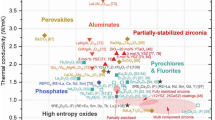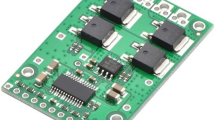Abstract
Ester oils are evolving as next-generation transformer insulants, and it is essential to understand their characteristic variation upon thermal ageing. Corona inception voltage reduces with thermally aged ester oil under AC and DC voltages. The UHF signal generated due to corona discharge activity has energy content in the range 0.4–4 GHz. The magnitude and energy content of the UHF signal formed due to corona activity increases with thermally aged oil. Ionic mobility studies are carried out to understand the impact of thermal ageing on polarization and depolarization current, ion concentration, and ionic radius formed in the oil. Thermal ageing of ester oil leads to an increase in the ionic mobility of oil samples along with an increment in the ionic concentration. The conductivity of oil is observed to increase with ageing, accompanied by a reduction in ionic radii. The effect of voltage stress shows enhanced conductivity for thermally aged oil samples. Dielectric response spectroscopy exhibits higher loss and permittivity values for thermally aged oils. The physicochemical analysis shows a gain in viscosity, moisture content and turbidity, and a marginal loss in thermal conductivity due to the formation of new molecular species. UV analysis exhibits a significant redshift in the oil sample aged at a higher temperature.













Similar content being viewed by others
References
Martin D, Saha T, McPherson L (2017) Condition monitoring of vegetable oil insulation in in-service power transformers: some data spanning 10 years. IEEE Electr Insul Mag 33(2):44–51
Fofana I, Bouaïcha A, Farzaneh M, Sabau J, Bussières D, Robertson EB (2010) Decay products in the liquid insulation of power transformers. IET Electr Power Appl 4(3):177–184
Muhamad NA, Phung BT, Blackburn TR (2012) Application of common transformers faults diagnosis methods on biodegradable oil-filled transformers. Electr Eng 94(4):207–216
Balasubramanian M, Ravi G, Dharmalingam V (2012) Interdependence of thermal and electrical stresses on initiating degradation of transformer insulation performances. In: IEEE international conference on advances in engineering, science and management (ICAESM-2), pp 399–402
Jabloski M, Juszczak EN (2006) Internal faults in power transformers. IET Electr Power Appl 1(1):105–111
Park TW, Han SH (2017) Numerical analysis of local hot-spot temperatures in transformer windings by using alternative dielectric fluids. Electr Eng 97(4):261–268
Radakovic Z, Maksimovic S (2002) Non-stationary thermal model of indoor transformer stations. Electr Eng 84(2):109–117
Bandara K, Ekanayake C, Saha T, Ma H (2016) Performance of natural ester as a transformer oil in moisture-rich environments. Energies 9(4):258–271
Judd MD, Cleary GP, Bennoch CJ (2002) Applying UHF partial discharge detection to power transformers. IEEE Power Eng Rev 22(8):57–59
Islam MM, Lee G, Hettiwatte SN (2018) A review of condition monitoring techniques and diagnostic tests for lifetime estimation of power transformers. Electr Eng 100(2):581–605
Stringer AD, Thompson CC, Barriga CI (2019) Analysis of historical transformer failure and maintenance data for facility reliability. In: Conference record—industrial and commercial power systems technical conference, vol 2019
Bartnikas R (1967) Dielectric loss in insulating liquids. IEEE Trans Electr Insul 2(1):33–54
Wang SQ, Zhang GJ, Wei JL, Yang SS, Dong M, Huang XB (2010) Investigation on dielectric response characteristics of thermally aged insulating pressboard in vacuum and oil-impregnated ambient. IEEE Trans Dielectr Electr Insul 17(6):1853–1862
Yang L, Zadeh MS, Schiessling J, Hjortstam O, Serdyuk YV, Gubanski SM (2012) Measurement of ion mobility in transformer oils for HVDC applications. In: ICHVE 2012–2012 international conference on high voltage engineering and application, pp 464–467
Lv Y, Du Q, Wang L, Sun Q, Huang M, Li C, Qi B (2017) Effect of TiO2 nanoparticles on the ion mobilities in transformer oil-based nanofluid. AIP Adv 7(10):105022
Yang L, Gubanski S, Serdyuk YV, Schiessling J (2012) Dielectric properties of transformer oils for HVDC applications. IEEE Trans Dielectr Electr Insul 19(6):1926–1933
IEEE Std C57.147™ (2008) IEEE Std C57.147™-2011-guide for acceptance and maintenance of natural ester fluids in transformers
IEC 60247 (2004) Insulating liquids—measurement of relative permittivity, dielectric dissipation factor (tan δ) and d.c. resistivity
Azcarraga CG, Cavallini A, Piovan U (2014) A comparison of the voltage withstand properties of ester and mineral oils. IEEE Electr Insul Mag 30(5):6–14
Xiang J, Liu Q, Wang ZD (2016) Inception and breakdown voltages of insulating liquids under DC stress. In: ICHVE 2016—2016 IEEE international conference on high voltage engineering and application, pp 1–4
Beroual A, Zahn M, Badent A, Kist K, Schwabe AJ, Yamashita H, Yamazawa K, Danikas M, Chadband WD, Torshin Y (1998) Propagation and structure of streamers in liquid dielectrics. IEEE Electr Insul Mag 14(2):6–17
Devins JC, Rzad SJ, Schwabe RJ (1981) Breakdown and prebreakdown phenomena in liquids. J Appl Phys 52(7):4531–4545
Judd MD, Cleary GP (2006) UHF and current pulse measurements of partial discharge activity in mineral oil. IEE Proc Sci Meas Technol 153(2):47–54
Adamczewski I, Januszajtis A (1996) Progress in understanding of ionization conduction and breakdown in dielectric liquids. In: ICDL’96. 12th international conference on conduction and breakdown in dielectric liquids, pp 148–151
Watanabe M, Sanui K, Ogata N, Kobayashi T, Ohtaki Z (1985) Ionic conductivity and mobility in network polymers from poly(propylene oxide) containing lithium perchlorate. J Appl Phys 57(1):123–128
IEC 61620 (1998) Insulating liquids—determination of the dielectric dissipation factor by measurement of the conductance and capacitance—test method
Onsager L (1934) Deviations from Ohm’s law in weak electrolytes. J Chem Phys 2(9):599–615
Choe E, Min DB (2007) Chemistry of deep-fat frying oils. J Food Sci 72(5):77–86
André D (2011) Conduction and breakdown initiation in dielectric liquids. In: Proceedings—IEEE international conference on dielectric liquids, pp 1–11
Singha S, Asano R, Frimpong G, Claiborne C, Cherry D (2014) Comparative aging characteristics between a high oleic natural ester dielectric liquid and mineral oil. IEEE Trans Dielectr Electr Insul 21(1):149–158
Jonscher AK (1996) Universal relaxation law, 2nd edn. Chelesa Dielectric Press Lmitied, London
Saha TK, Darveniza M, Yao ZT, Hill DJT, Yeung G (1999) Investigating the effects of oxidation and thermal degradation on electrical and chemical properties of power transformers insulation. IEEE Trans Power Deliv 14(4):1359–1367
ASTM-6802 (2010) Test method for determination of the relative content of dissolved decay products in mineral insulating oils by spectrophotometry. ASTM Designation D 6802 Vol 10.03
Fernández I, Ortiz A, Delgado F, Renedo C, Pérez S (2013) Comparative evaluation of alternative fluids for power transformers. Electr Power Syst Res 98:58–69
Hadjadj Y, Fofana I, Sabau J, Briosso E (2015) Assessing insulating oil degradation by means of turbidity and UV/VIS spectrophotometry measurements. IEEE Trans Dielectr Electr Insul 22(5):2653–2660
Viertel J, Ohlsson K, Singha S (2011) Thermal aging and degradation of thin films of natural ester dielectric liquids. In: Proceedings—IEEE international conference on dielectric liquids, pp 1–4
Liao R, Hao J, Chen G, Ma Z, Yang L (2011) A comparative study of physicochemical, dielectric and thermal properties of pressboard insulation impregnated with natural ester and mineral oil. IEEE Trans Dielectr Electr Insul 18(5):1626–1637
Author information
Authors and Affiliations
Corresponding author
Additional information
Publisher's Note
Springer Nature remains neutral with regard to jurisdictional claims in published maps and institutional affiliations.
Rights and permissions
About this article
Cite this article
Thakur, S., Sarathi, R. & Danikas, M.G. Investigation on thermal ageing impact on dielectric properties of natural ester oil. Electr Eng 101, 1007–1018 (2019). https://doi.org/10.1007/s00202-019-00843-4
Received:
Accepted:
Published:
Issue Date:
DOI: https://doi.org/10.1007/s00202-019-00843-4




